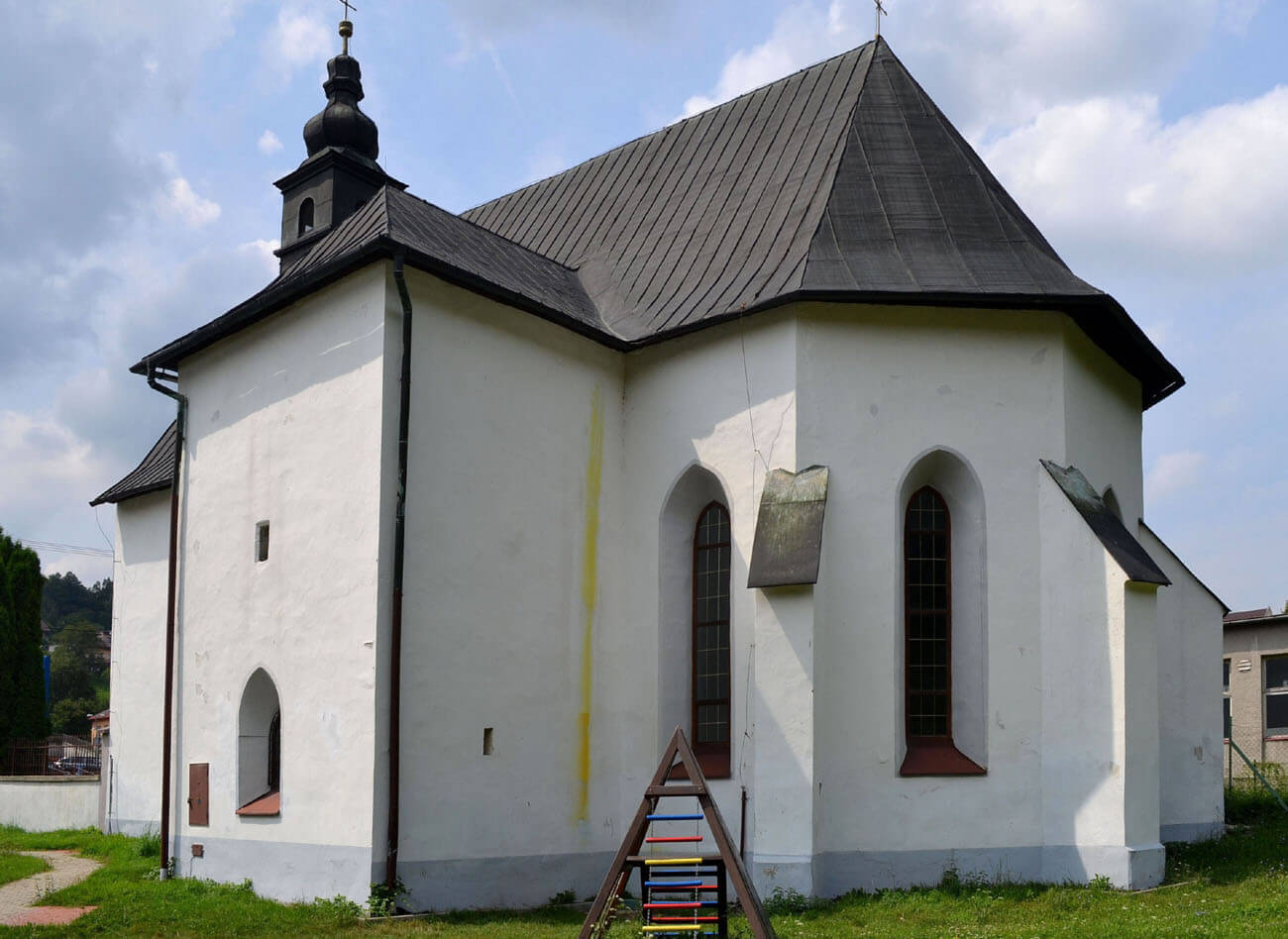History
The church was founded at the end of the fourteenth century by the royal official Henzmanus (Hermannus) Izenrinkel, next to the hospital for elderly and disabled miners. The administrator of the church and the hospital was an elected priest (magister xenodochii), who received an annual salary of 40 guilders and was released from the authority of the local parish priest. The maintenance of the church was ensured by King Sigismund of Luxemburg, who, in an act of 1393, donated the neighboring village of Brehy with all its salaries to the hospital.
In the 16th century, the church was supposed to be in good condition, it was properly maintained and relatively richly equipped. The priests administering it during the Reformation period began to lean towards a new religion, thanks to which the building was already in the hands of Protestants as far back as 1561. In 1664, Nová Baňa was captured by the Turks, who converted the church into a mosque. They occupied the town for several years, and when they left, they set fire to the church along with other buildings. It returned to the hands of Christians and was renovated by the Protestant community in 1667. In the course of the following years, marked by anti-Habsburg uprisings, the church changed hands several times. The Catholics finally regained it only in 1706.
In 1810, the church was partially flooded as a result of the overflowing stream. After carrying out the necessary repairs, then in 1825 the roof was to be renewed. In 1848, as a result of the abolition of serfdom, the village of Brehy was taken from the property of the church. Due to the lack of income, the building fell into neglect in the second half of the 19th century. Only in 1893, thanks to the collection of money and the help of the city council, the building was renovated. Further renovations of the church were carried out in 1944, 1948 and 1960.
Architecture
The church was built as a small, aisleless building, with a polygonal chancel of the same width as the nave and a rectangular annex on the south side. In the latter, a sacristy was placed on the ground floor, while stairs embedded in a turret between the walls of the nave and sacristy led to the first floor. In the western façade of the church there a pointed, moulded entrance portal was set, an oculus filled with quatrefoil tracery and the coat of arms of the founder Henzman Izenrinkel, above which a narrow opening illuminating the attic was pierced. The other windows were pointed and splayed on both sides. The chancel was reinforced with buttresses from the outside, thanks to which a cross-rib vault could be installed inside.
Current state
From the outside, the church has mostly Gothic form, only the turret on the roof ridge is Baroque. In the western façade you can see a Gothic portal, a tracery oculus and shield of the founder of the church. The current vault inside the church is Renaissance and dates from the second half of the 17th century. The architecture of the altar dates back to the turn of the 17th and 18th centuries, but its oldest part is a polychrome woodcarving from the end of the 16th century, depicting the Last Supper. Medieval buildings of the hospital have not survived.
bibliography:
Lexikon stredovekých miest na Slovensku, red. Štefánik M., Lukačka J., Bratislava 2010.
Slovensko. Ilustrovaná encyklopédia pamiatok, red. P.Kresánek, Bratislava 2020.
Stredáková K., Kostolík svätej Alžbety, “Novobanské noviny”, 8/2021.

